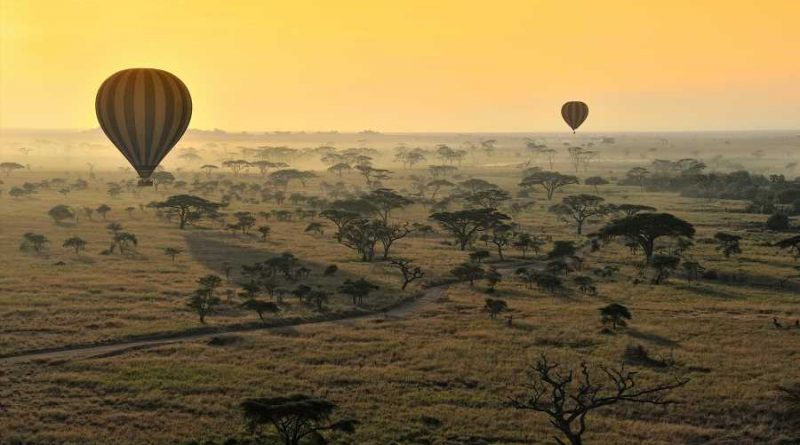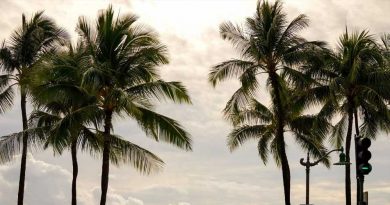10 Incredible National Parks in Africa — From Vast Deserts to Rain Forests and Mountains
Editor’s Note: Those who choose to travel are strongly encouraged to check local government restrictions, rules, and safety measures related to COVID-19 and take personal comfort levels and health conditions into consideration before departure.
The second-largest continent in the world, Africa is home to vast and varied array of landscapes, including protected national parks teeming with incredible wildlife, serene views, and mind-blowing adventures. But with so many national park options to choose from — over 300 — narrowing down an itinerary is no easy feat.
To help you plan an unforgettable trip, we put together a list of some of the most deservedly famous African national parks — plus a few you might not know. From ancient deserts to urban mountain ranges, and rain forests to savannahs, these are 10 incredible national parks in Africa.
Namib-Naukluft National Park, Namibia
For many of us city dwellers, modern luxuries come in the form of complete silence, expansive, undeveloped landscapes, and dark night skies. You can find all that in the Namib-Naukluft National Park in western Namibia. It’s one of the largest national parks in the world, at nearly 20,000 square miles, and the largest in Africa. The park includes a portion of the Namib Desert — said to be the oldest in the world — deep canyons, and a section of the wild Atlantic Ocean coastline. It’s perhaps best known for the giant, rust-red sand dunes of the Sossusvlei area and the famous Deadvlei clay pan with its striking dead camel thorn trees — one the most photographed scenes in Namibia.
Hwange National Park, Zimbabwe
If you love elephants, Hwange is the place to go. The park borders Botswana, and the largest elephant population in the world lives across the two countries, a large portion of them congregating in Hwange. The best time to catch a glimpse of these “super herds” is the dry season (August to October), when they gather around the water holes. There are also lions, leopards, cheetahs, wild dogs, and rhinos to see. One of the best things about Hwange — Zimbabwe’s largest game park — is that it’s within driving distance of Victoria Falls and its international airport, so you can easily combine a safari with a trip to the famous attraction.
Kruger National Park, South Africa
Kruger is a vast national park that’s as popular with South Africans as it is with international guests. In the far northeast of South Africa, the park borders Mozambique and Zimbabwe, stretching 200 miles north to south with an area of 7,523 square miles. Home to the Big Five (lions, leopards, elephants, rhinos, and buffaloes), the park also has facilities and properties for all kinds of travelers: luxury safari lodges, camping, self-driving excursions, and walking tours, to name a few. If exclusivity is important, there are excellent private reserves on the park borders that cost more, but mean fewer other guests. Given the park’s popularity, the animals here are habituated, and even elusive species such as leopards are super-comfortable around vehicles. For a quieter safari, head to the northern portion of the park, where you’ll find large fever tree forests and giant baobabs.
Volcanoes National Park, Rwanda
Gallery: Why you should see the least-visited US national parks (StarsInsider)
If it’s a life goal to see endangered mountain gorillas, Volcanoes National Park in Rwanda is a solid choice (the other — cheaper — options include Bwindi Impenetrable Forest National Park or Mgahinga Gorilla National Park in Uganda and Virunga National Park in the DRC). The experience starts at the park headquarters, where trekkers are assigned a gorilla group. Your ranger will then lead you into the mountainous forest — depending on where the gorillas are, it could take 30 minutes or several hours. You’ll have one precious hour to watch the group feed, interact with each other, and appraise their hairless visitors. Volcanoes has the most luxurious accommodations in the region and the highest fees ($1,500 per person per gorilla trek). However, you’ll also have the advantage of easily being able to combine a gorilla trek with a visit to Rwanda’s capital, Kigali, and other parks, including Nyungwe (great for birding and chimpanzee trekking) and the recently rewilded Akagera.
Load Error
Serengeti National Park, Tanzania
The word Serengeti accurately summons images of vast golden plains, cheetahs sitting atop termite mounds, and hundreds of wildebeests plunging into the waters of the Mara River as part of their Great Migration. Bordering Kenya’s Maasai Mara National Reserve, it’s often considered the less crowded of the two iconic parks, in part because it’s bigger. Aside from offering the great landscapes that sub-Saharan Africa is famed for (think blazing sunsets with a single acacia tree in the foreground), it’s a great place to see big cat action. Cheetahs are able to stretch their legs on the wide-open plains, while leopards are relaxed enough to allow vehicles to get close.
Odzala-Kokoua National Park, Republic of the Congo
It’s entirely possible that you’ll be the only tourists in this lesser-known national park. Up in the north part of the Republic of the Congo, Odzala protects a portion of the Congo Basin rain forest, often called the “second lungs” of the world (after the Amazon rain forest). Here, you can visit western lowland gorillas (smaller and usually more energetic than their mountain cousins), kayak through the forest waterways, walk through quiet woodlands while keeping your eyes peeled for chimpanzees, and watch elephants browsing around camp.
Queen Elizabeth National Park, Uganda
In western Uganda, Queen Elizabeth National Park borders the DRC’s Virunga National Park, with which it shares Lake Edward. Its landscape is made up of lakes and channels, volcanic cones and craters, savannahs, and forests. The park is known for its tree-climbing lions — unusual behavior for the animals — but there are also elephants, buffaloes, leopards, chimpanzees, and hippos to spot, plus more than 500 types of birds. As well as game drives, you can take boat trips along the Kazinga Channel and track chimps.
Table Mountain National Park, South Africa
Arguably the best urban-based national park in the world, Cape Town’s Table Mountain National Park is the city’s playground. The mountain range is crisscrossed by trails of varying difficulty levels, each presenting views that make even the most blasé of Capetonians pinch themselves — from watching the sun rise over the city atop Lion’s Head to seeing it set on the Atlantic Ocean from the Pipe Track. Clamber up to the top via India Venster with the City Bowl below or take in a panoramic view of the ocean and Hout Bay from Suther Peak. There are gentle, shady strolls through Newlands Forest and beautiful single-track trail running routes across the mountaintop. Spot South Africa’s national flower (the king protea), tiny colorful sunbirds, and even one of the mountain’s caracals. And if you’re not into hiking, running, or mountain biking, the cable car will whisk you up to the top of Table Mountain in a matter of minutes.
South Luangwa National Park, Zambia
South Luangwa National Park is known as the home of the walking safari. In eastern Zambia, the Luangwa River runs through the park, the banks of which act as a gathering point for the area’s animals. Aside from having a high concentration of leopards, there are lions, elephants, buffaloes, spotted hyenas, Thornicroft’s giraffes, zebras, and wild dogs, as well as hundreds of bird species, including various eagles, kingfishers, and herons. You can travel the park by 4×4, boat, and of course, foot — a fly-camping walking safari is not to be missed.
Pendjari National Park, Benin
Located in northwest Benin, the park is a stronghold for West African lions and elephants, but it’s also possible to see hippos, buffaloes, waterbucks, and hartebeests — and if you’re very lucky, leopards and cheetahs. Dry season is the best time to visit, as the park’s thick bush — part of a landscape made up of woodlands, savannahs, and rolling hills — can make wildlife spotting tricky in the wet months. The park is tipped as one to watch, as the Benin government has committed itself to boosting tourism, which includes a focus on Pendjari’s development. Conservation organization African Parks has been contracted to manage the park, create employment opportunities, boost security, and encourage more travelers to visit.
Source: Read Full Article




